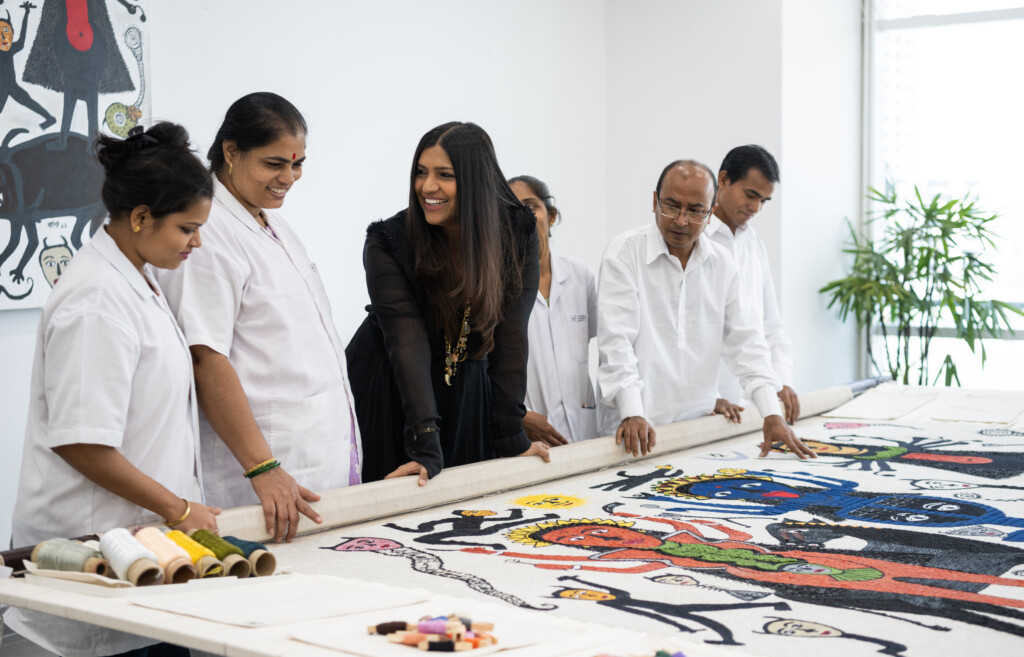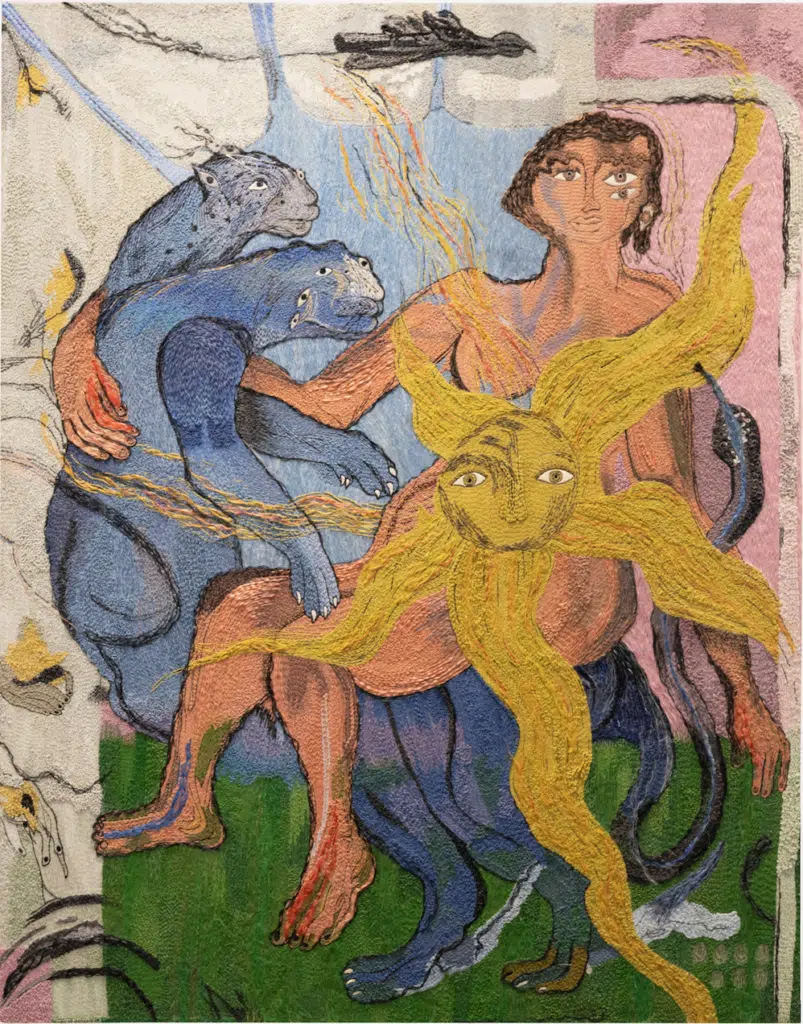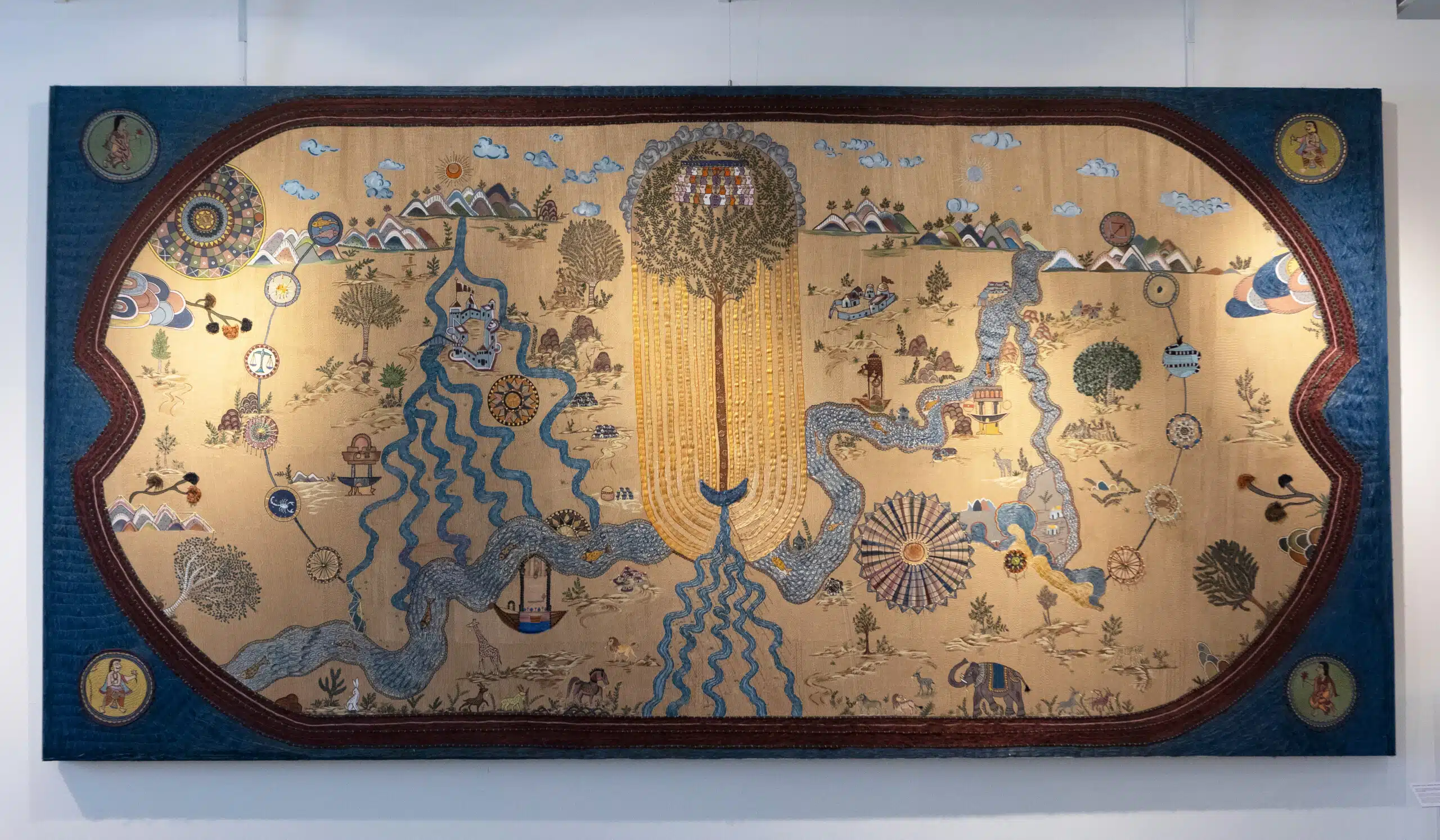Chanakya International, now known for its contribution to high fashion and haute couture embroidery, has been dedicated to the revival of India’s textile and cultural heritage for nearly four decades. Throughout, the mission of the organisation has remained the same: “to ensure that the magic of artisans lives forever.” Karishma Swali, currently the Creative Director of the organisation, was also instrumental in setting up the Chanakya School of Craft in 2016, a non-profit institute and foundation that addresses the need to formalise craft education and build autonomy for women. The School teaches more than 300 embroidery techniques, and has produced over a thousand graduates.
We speak with Karishma to learn more about her organisation, its special projects and collaborations, and the personal and spiritual philosophies which drive her practice.
Tell us a little bit about the Chanakya Ateliers.
When my father, Vinod Shah, established Chanakya in 1984, his vision was to share India’s finest craftsmanship with the world. Housing a pantheon of master artisans and skilled designers, we are deeply committed to highlighting the pluralistic beauty and diversity of Indian hand-craftsmanship, at the intersection of art, craft and couture.
Our ateliers have 12th and 13th generation artisans—they are really national treasures. It’s a close-knit family with over a 1000 artisans and 50 principal designers who want to find ways to celebrate culture, community and craft collectively; and the ustaads are very much the driving force.
The Chanakya School of Craft aims to restore the craft legacies of India. What is your hope for craftspeople graduating from the school?
We started the school to preserve craft through innovation and education. Craft in India has never been institutionalised and we realised that there was a great peril of losing some of our crafting legacies. The knowledge also usually flowed from father-to-son, and women never had the opportunity to express themselves and find financial freedom. Our hope for the people who graduate from this school is that they cultivate a deep sense of pride about who they are and where they come from.

 Top: Karishma Swali with the artisans at the Chanakya School of Craft. Image by Hashim Badani; Bottom: ‘Belong’, 2023, Courtesy of Chanakya Foundation
Top: Karishma Swali with the artisans at the Chanakya School of Craft. Image by Hashim Badani; Bottom: ‘Belong’, 2023, Courtesy of Chanakya Foundation
Chanakya brings heritage craft to the international fashion scene. How does the international fashion scene influence Chanakya?
The one key thing that the international fashion scene brings us every day is fresh perspective. We’re very lucky to be working with some of the finest creative geniuses across the world. For example, last week we were looking at a specific jute thread which I associated with weaving or fringing. But the international group of designers that we were with introduced the idea of playing with its opacity. Through this collaboration, we unlocked how jute is about a play of textures and light, and that truly transformed the work. Over the years, we’ve found numerous ways to keep the dialogue of craft fresh, so that it’s available for future generations.
The Chanakya ateliers have done some amazing collaborations, including with artists such as Madhvi and Manu Parekh. Tell us more about this partnership.
I began collecting Madhvi and Manu Parekh’s work almost 20 years ago. I find Madhvi’s works to be such a beautiful mix of rawness and divinity. Translating her lines with thread, for us, was tremendously exciting. With Manu, he has a specific work called Chant III where he explored vibrations through paint. For us, to translate that vibration to thread was immensely gratifying and sometimes quite mind-boggling. When you work with masters, you realise the depth of the discipline and how infinite it really is.
How have you seen the world of global fashion evolve over time?
In the 1960s and 70s, the definition of ‘luxury’ was centred around what was rare but not necessarily purpose-led. As I grew up, I saw a paradigm shift in the term ‘luxury’ becoming something more meaningful that could hold and preserve, whether it was preserving a community or a master skill.
If we go back a few hundred years, craft was at the centre of fashion in India and across the globe. There are poems from the 6th and 7th centuries that talk about the richness of Indian muslin. India, historically, has been centerstage for handloom, handcrafts and the mastery of making something beautiful to wear. It’s been something that was deeply revered across the globe but with the advent of industrialisation, that got lost along the way. Now with the dialogue in fashion being so much about collective responsibility, communities, tradition and the ecosystem, we are seeing it coming back. Global fashion houses are also starting to understand that they can use their position wonderfully. Fashion can be used to protect communities and the planet.
What was it like growing up with access to India’s ancient crafting traditions and the world of modern design?
Our home was always filled with conversations about art and culture, and how they influenced each other. For me, it was simply a way of life. We could have a two-hour conversation around a small Shiva or Parvati bronze statue. As a child I don’t know how much I enjoyed it, but it certainly shaped my aesthetic and belief system. I’d accompany my dad to the ateliers very early on, and watching 150 craftspeople create with a palpable devotion defined my career path.

Karishma Swali and Chanakya School of Craft, ‘Antric Vishv’ (Inner Universe), 2023. Image by Hashim Badani, courtesy of Chanakya School of Craft
You’ve also spoken about how you’re drawn to embroidery and crafts because of its communal spirit. Can you tell us a bit more about this?
When I was young, I was introduced to this concept called Samuh Purushat, where samuh is togetherness and purushat is effort, and how collective effort has incredible results. I didn’t understand that until I began to go to visit the ateliers. There were people working on a piece together with a certain quiet dignity and I began to understand how much depth there is in the riyaz of craft. The repetitive rhythm automatically allows you to align with yourself to what everyone around you is doing as well. There’s so much joy in collectively creating something when you’re aligned with yourself.
Before I joined the business, my dad made me do a very detailed craft documentation across India where I travelled to communities and lived with them. In those travels, I realised that there is a certain simplicity to how life is approached which came from a connection to a higher energy. This idea of devoting yourself to an expression, that is in the end a collective identity, is quite a selfless act.
Which designer, living or dead, would you love to have dinner with? Where would this dream date take place? What would you eat?
Rabindranath Tagore, in Shantiniketan. We’d dine under the trees, and I’d just absorb his wisdom and his spirit. We’d probably eat something like a cauliflower in kasundi. *laughs* My mouth is watering.
Chanakya International was established in 1984 and Chanakya School of Craft was established in 2016 in Mumbai, India. The School’s work will be part of India Art Fair’s inaugural Design section at the 2024 edition, along with other pioneers in the field.


